This post may contain affiliate links. This just means I may receive a small commission at no extra cost to you for helping them promote their product or service. I don’t endorse any services I don’t personally use or recommend.
South Korea is a destination I’ve always been semi-interested in. It never topped my bucketlist, but it was also far from the bottom. My hesitation has always been my pension for remote undeveloped destinations rather than a modern metropolis. But I love Bangkok, Cairo, and Mumbai. So, why not add Seoul to my list?
We spent 10 days in South Korea and while that’s not nearly long enough to be any kind of expert on the country, it was long enough to gain some valuable insight and recommendations worth passing along. Here’s our mini travel guide for a quick trip to South Korea.
Our Mini Travel Guide to South Korea (10-Day Itinerary)
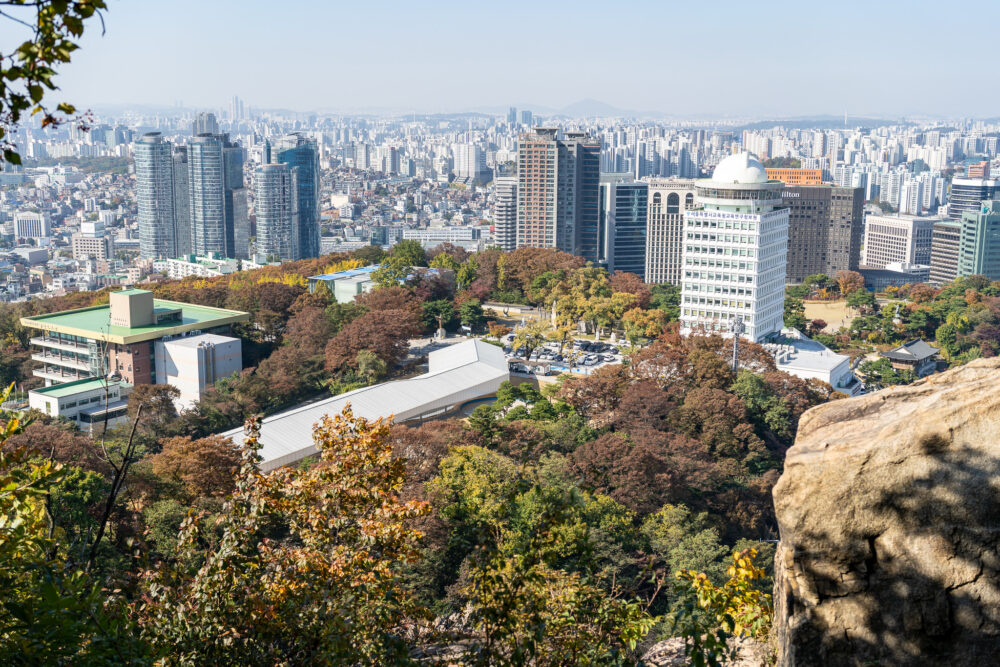
This is not a be-all-end-all list for the country. But it is a collection of my favorite destinations, food, and some helpful tips to make getting around the country a bit easier for first-timers.
Important Tips for Traveling in South Korea
Fall is the perfect time to visit Korea. Specifically, early to mid-October when the hills are alight in gold, orange, and red leaves. Leaf-peeping here rivals Vermont. The entire countryside is covered in forested hills that change with the season. Add to that the mild temperatures and blue skies, and this is the best season to visit.
I’ll divide the rest of the tips into two separate categories…tips for making travel easier and tips to make the rich culture of Korea more digestible.
Tips to Make Travel Easier
1. Make sure your flight arrives before 11 PM.
Night flights into Seoul are rare but they do happen. I know because we were on one. Arriving late into Seoul, where the airport is an hour-long drive from the city center means you have to taxi rather than use the super easy and cheap metro. Taxis from the airport to the city cost around $55.
2. Download KakaoMap
For whatever reason google maps and maps.me are basically useless in Korea. This map will save your skin though. The only downside is it’s not offline compatible (that I know of) so you’ll still need a Korean SIM card to use it for directions outside the hostel. We found things on Kakao and then plotted them on Maps.me so we could skip the SIM card.
3. Screenshot the front of the building so you can actually find it.
Most of the time the name of restaurants will be in Korean, not English so it’s helpful to know what the place looks like rather than what it’s called. We were especially sure to do this with our accommodation.
4. You don’t NEED a T-Money card but it will save you time.
A T-Money card is essentially a reloadable public transport card. You can use the disposable trip cards each metro use but since we used the metro several times per day in Seoul it seems like it makes the most sense to just get a card. Each metro ride is about 75 cents per person. Buses take cash as well as T-money cards.
5. Watch out for Mondays.
Museums, restaurants, and shops are often closed on Monday. Think Sunday hours in the USA.
6. Inter-city bus tickets can be bought the day of, but on the weekends should be purchased in advance.
There are little kiosks with English menu options that should be able to help you secure tickets at each bus station. We bought all of ours on the day of travel with no problems. But during high season or weekends, you could have problems securing a seat day of on the more popular or less serviced routes.
7. “Express Buses” don’t actually get you there any faster.
Because roads are so well maintained in South Korea the “Intercity” buses and “Express” buses have little to no time difference between destinations. The big difference is in the type of bus. Express buses are a little more expensive, located in slightly less convenient areas, and a little nicer with larger seats and more recline. But the intercity buses are super comfy too.
The most important factor in deciding which you should use is where the respective bus stations are in relation to your accommodations. For us, we pretty much exclusively used the intercity buses because the terminals were all within walking distance from our accommodation.
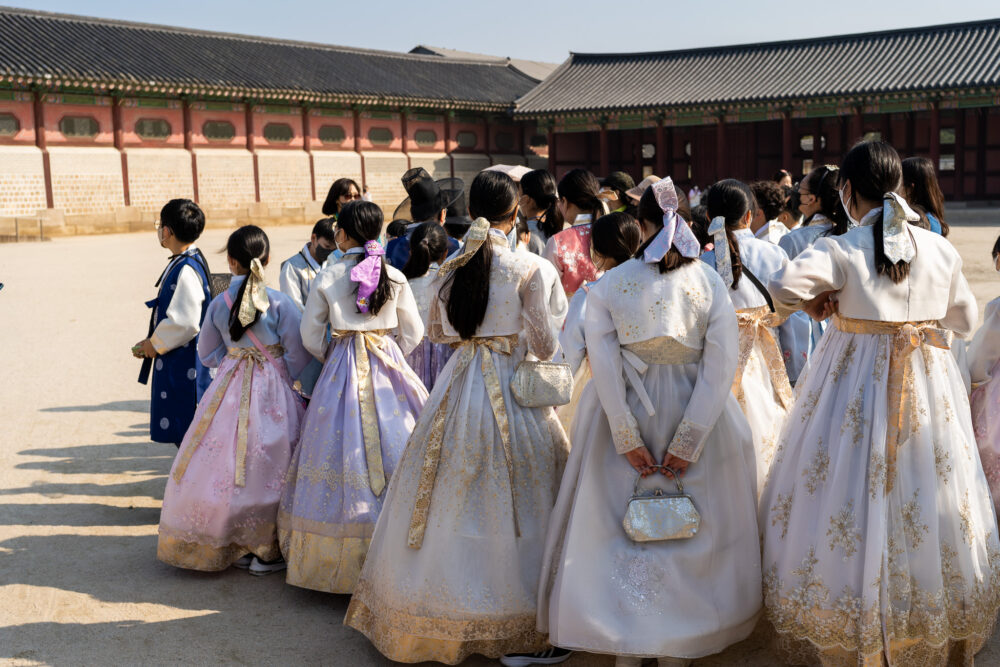
Cultural Tips
1. Know the polite way to give and receive something.
You should always receive things with two hands. You should always hand things to another person while using one hand and the other gently touching your elbow or forearm area.
2. Korea isn’t super solo traveler friendly.
This is arguable I suppose. Here’s the deal. There are a lot of dorms and it’s very easy to make friends in South Korea because there is a huge number of solo travelers. BUT a lot of Korean food is meant to be eaten in groups. To the extent that some restaurants won’t even let solo travelers be served certain meals (Korean BBQ for example). Portions in Korea are HUGE.
It’s also good to know that if a dish is 15-20,000 won you can expect it to be large enough to serve two hungry people. Meals in Korea are just meant to be shared and if you do eat solo you’ll end up spending more on food and having tons of leftovers.
Our Suggested South Korea Itinerary
This is how we filled our 10 days in Korea and how I would alter it if we could do it all again.
Seoul (4+ days)
If I could spend more time in Seoul just to eat all the glorious food…I would have. But Seoul is rather expensive. We found two dorm beds for $13 each at a lovely hostel in Hongdae called Time Travelers Relax Guesthouse. Hongdae is a young “nightlife” neighborhood but the hostel was quiet and it’s well connected to the rest of the city by metro.
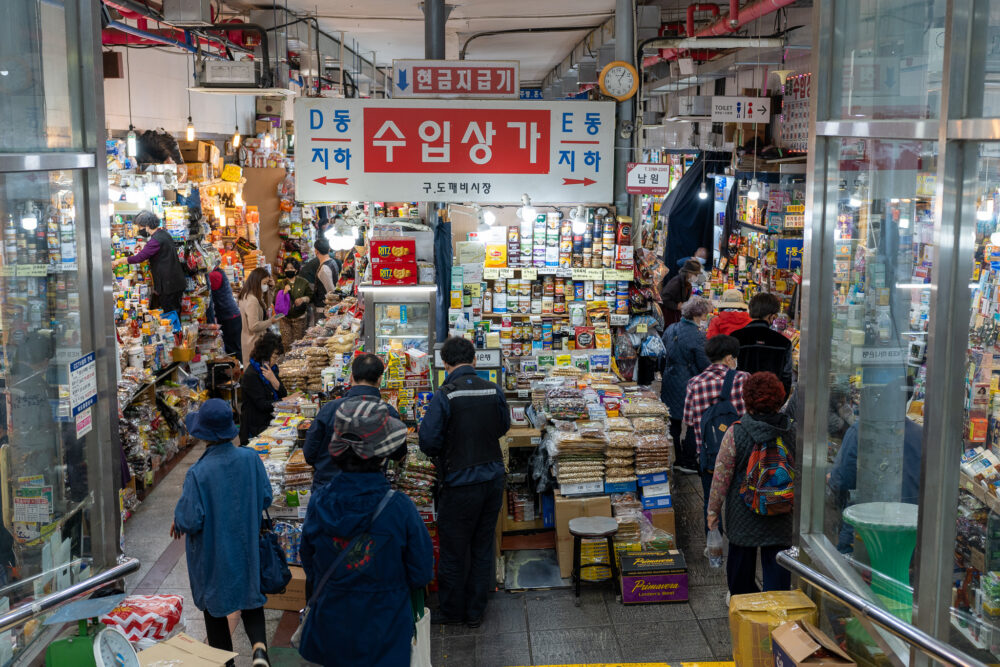
There’s a lot to do and see if you like parks, exceptional food, history, and museums. It’s also a city extremely popular with expats and those doing a work exchange while going to school. Digital nomads as well.
If you’re planning to go from Seoul to Sokcho by bus (you should, especially in the Fall) you should depart from DongSeoul Station. Not only is it easier to reach than the express bus terminal from Hongdae but it drops you off nearer the water (and likely your lodging) in Sokcho so you can walk.
Sokcho (2 Days)
It takes about 2.5 hours to reach Sokcho from Seoul. Take the bus from the Daegu station. It’s less popular with foreign tourists but it drops you at the intercity bus terminal in Sokcho which is closer (usually within walking distance) to most lodging.
Sokcho itself is a big summer beach + seafood destination. The streets are lined with crab tanks and stands BBQing little Mackerel. The city is much larger than I expected and other than the central market and lovely coastline at sunset doesn’t have all that much to offer. The main appeal is Seoraksan National Park.
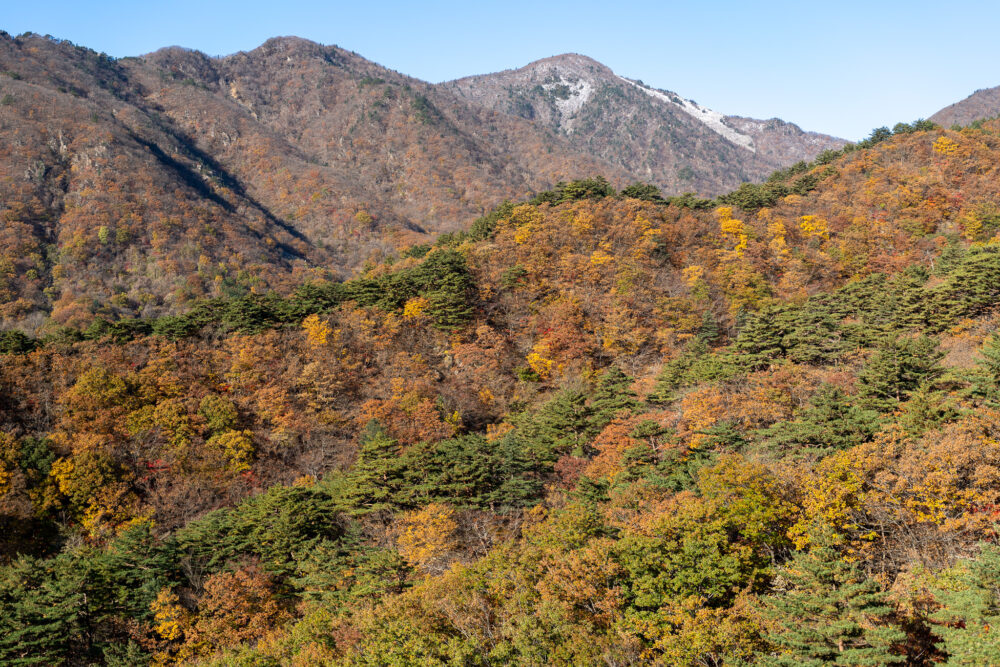
Take bus 7 from town to the end of the line and pay the $3 entrance fee for some of the best hiking in South Korea. Be sure to arrive before 7:30 AM to beat the crowds. And avoid weekends in the peak Spring, Summer, and Fall months.
If you only have time for one hike make sure it’s Ulsanbawi Rock. A 7-mile round trip uphill hike to an incredible viewpoint of Sokcho and the smooth boulders forming a ridge in the park. This one hike wiped us out and made us wish we had one more day in the park. So if you want to see it all and do the waterfall hikes or the walk through the valley to Geumganggul cave I would plan for one more day in the park.
Hostel: I recommend James Blue Hostel. James was super helpful in planning our trip, offers free coffee and breakfast, lovely rooms, and was right near all the bus stops we needed.
Jeonju (2 days)
Getting here from Sokcho via bus is a half-day venture. It can take anywhere from 5-6 hours and only a few departures per day that don’t route you back through Seoul. Plan to head to the bus station early.
The capital of culture and food in South Korea. Specifically, Bibimbap. During fall the streets of Jeonju are covered in the golden wings of ginkgo leaves and brilliantly yellow ginkgo, some over 600 years old, rim the old town. Jeonju is also known for its numerous festivals and being home to South Korea’s largest traditional village with more than 600 Hanok homes decorating the city skyline.
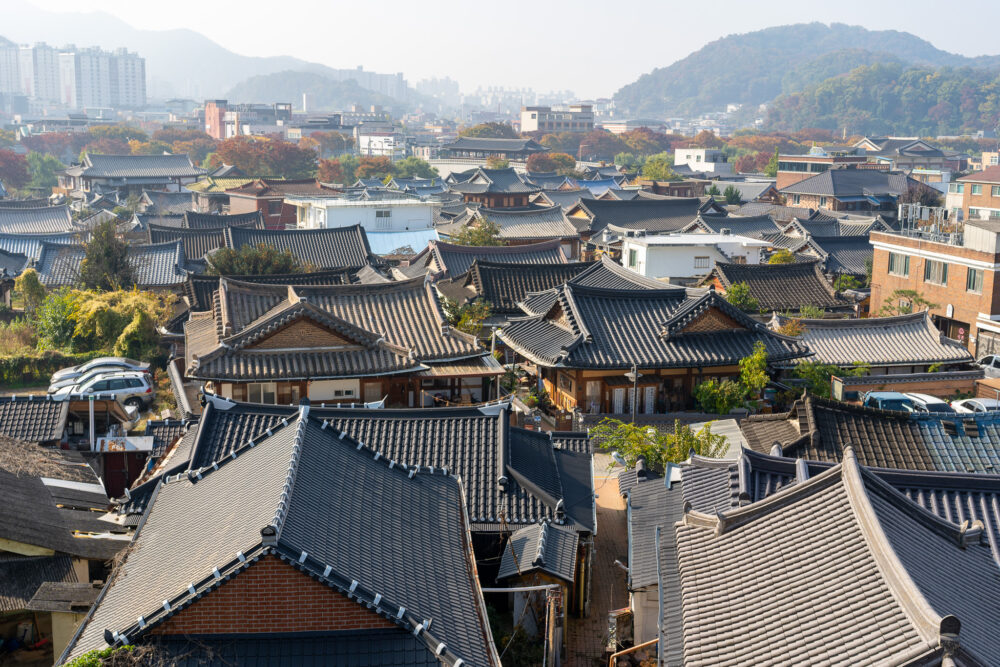
Many travelers miss Jeonju unless they’re foodie focused. But eating is Korea’s main attraction and it is a very pretty city.
Busan (2 days)
The bus from Jeonju to Busan is 4 hours and super easy. There are tons of buses leaving from both the intercity and express stations in Jeonju.
I hesitate to recommend two days in Busan. If you are going to cut one day out of your itinerary make it one from here. It’s not that I don’t like the city. I do. But as far as attractions and food go…the other destinations in Korea have more to offer. Busan is dirtier, more chaotic, seedier (not in a dangerous way), and I found the attractions a little more gimmicky. I feel like you could cram the beaches of Busan, Gamcheon Cultural Village, and food in Busan all into one day.
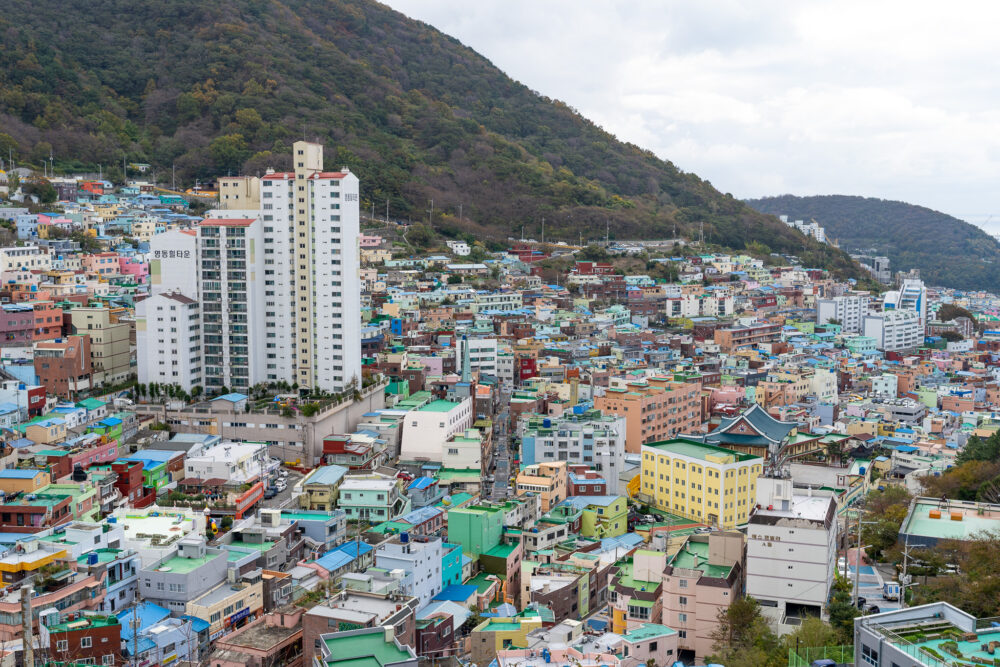
But judging by other travelers’ ravings about Busan, it appears that I’m in the minority.
There are plenty of other destinations you could add to your itinerary, popular ones include Jeju Island or the Gyeongju burial mounds. With limited time (and money) we decided to stick to just these 4 in the 10 days that we allotted for South Korea. This gives you a very well-rounded look at the country.
Sights We Recommend in South Korea
South Korea would be an amazing place to live. It’s no wonder so many digital nomads and English teachers spend a year or two getting to know the country. But not all of us have years to gallivant around the country.
Here’s a look at a few things you should definitely do on a short trip.
Best Sights in Seoul, South Korea
- Hike to Namsan Tower. The hike is only about 2.5 miles round trip and has great views of the city. We didn’t feel the need to go up into the tower because the views from the summit were impressive enough.
- Visit the War Memorial of Korea Museum. It’s free and a great way to learn about the history of the Korean Peninsula.
- Gyeongbokgung Palace. This offers a great look at ancient architecture in Seoul. It’s photogenic and a nice way to spend a morning. You can also rent a traditional Hanbok for $6 and enter the palace for free.
- Namdaemun Market. This outdoor market has everything. Tasty street food and all kinds of goods, it was one of my favorite places to visit in Seoul. Lunch is the best time to visit.
- Gangnam. This is a popular wealthy neighborhood in Seoul that’s worth walking through late at night.
- Enjoy the nightlife in Itaewon. This is a late-night club spot. If that’s you’re thing, you’ve got to check it out.
- Traditional Hanok Village. Get here early to see a beautifully preserved traditional neighborhood and photograph the steep streets.
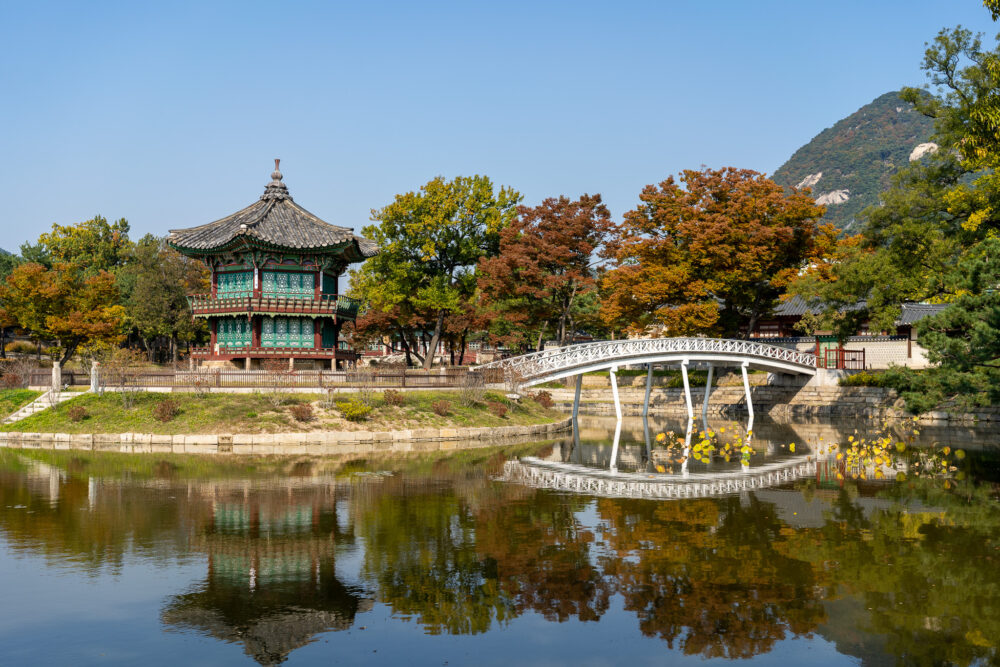
We skipped the DMZ. At $60 per person, DMZ tours are pretty expensive and it’s not like you get to set foot in North Korea. If you’re super interested in the current state of the demilitarized zone between the two countries the tour could be a good add-on to this list. I just felt like it wasn’t worth it to us.
Attractions to see outside of Seoul
- Seoraksan National Park (Sokcho). Ulsanbawi Peak is one of the more difficult trails but still doable in a long morning. I recommend getting to the park when it opens at 7 AM and starting this 7-mile hike right away.
- Igidae Coastal Walk (Busan). This is a lovely seaside walk to enjoy the pretty coastline of Busan.
- Gamcheon Cultural Village (Busan). This is a pretty touristy spot. But it’s worth an early morning visit to beat all the people and see the colorful neighborhood from above.
- Jeonju Hanok Village. This is the largest in South Korea. There are plenty of viewpoints throughout the city to photograph the iconic rooftops.
- Jaman Mural Village (Jeonju). Near the Hanok village is a small neighborhood covered in cute Korean murals. There’s a really tasty deep-fried rice cake gimbap in there too.
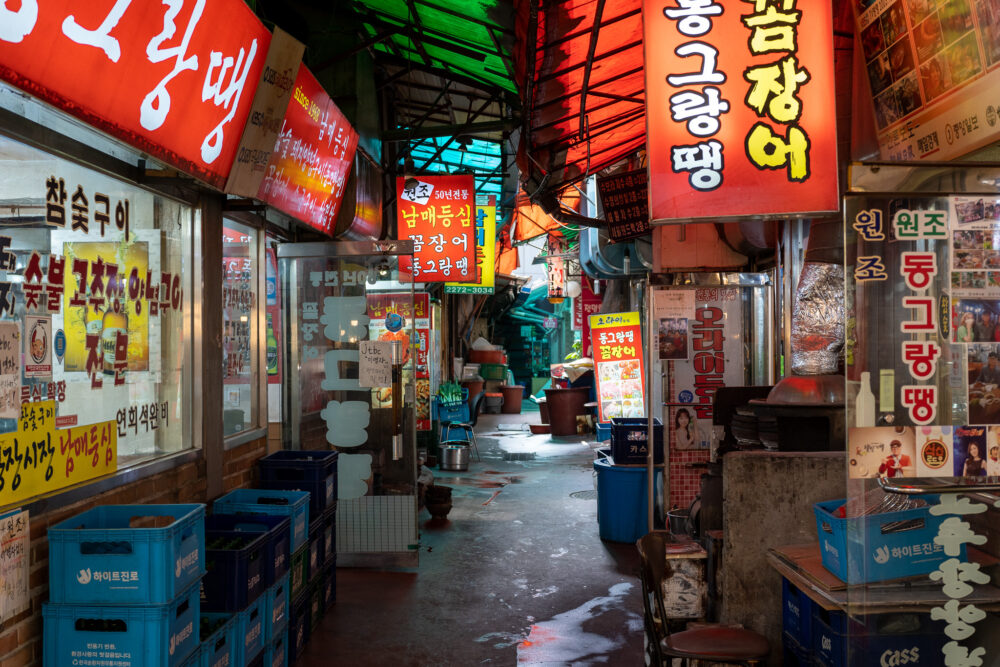
Food We Recommend in South Korea
Food is one of the main reasons to visit South Korea. I mean, the country is extraordinary, with excellent nature preserves and sprawling livable cities filled with parks. But the food is a major draw for travelers. Here are a handful of my favorites.
You would have to spend more than a month in Seoul to hit all the best places. My 4-days were nowhere near enough. Normally, I wouldn’t even bother making food recs having been in the city so short of time. But thanks to Will Fly For Food and several other blogs I was able to compile a list of the best of the best.
Don’t forget to look up all these places on KakaoMap because Google Maps work so poorly in Korea.
Some Must Eats in South Korea
- Hyodo Chicken. (Seoul) Hands down the best friend chicken in the world. I mean it. I don’t care where you are staying — make the journey to it and get the original + soy-soaked bone-in. This place is owned by two Michelin chefs but costs the same as any other classic chicken and beer joint in Korea.
- Woo Lae Oak. (Seoul) Korean BBQ, the best kimchi I had in the country, and the must-eat dish — Pyongyang North Korean Noodles. Made from buckwheat and in a cold broth.
- Sokcho Seolong. (Sokcho) Stepping outside of Seoul, this Hawaiian/Japanese fusion is incredible. Get the Tonkatsu.
- Dok Galbi. (Seoul) The name of the restaurant is in Korean so just put (37.555987, 126.925378) into your GPS and that should find it. Massive portions and best served with an order of udon scrambled into it.
- Gyeongdong Market. (Seoul) This is THE street food market in Seoul. Many of the dishes are Michelin-starred or featured on various Netflix shows (like Street Food). You have to get Kimchi dumplings, potato pancakes, and hand-cut noodle soup. Come for lunch rather than dinner and be sure to pick the place with the longest line.
- Grandma Yus Bibimbap. (Seoul) The best in Seoul. Jeonju is renowned for its bibimbap through.
- Yeontabal Korean BBQ. (Seoul) If you need the best Korean BBQ in the country.
- Sooni’s Store. (Seoul) I recommend the Kimchi stew if you can handle the spice or a delicious rice cake and cheese ramen.
- Manjok Ohyang Jokbal. (Seoul) Pig trotters and pork belly.
- The Best Bibimbap (Jeonju). Okay, again the restaurant is in Korean so you’ll have to make do with the GPS coordinates and look for the big line outside. Coordinates: 35.817573, 127.1458
- Veteran Noodle (Jeonju). This locally famous shop serves kalguksu noodle soup and dumplings with heated floor seating.
- Dongducheon Budae Jjigae (Busan). If you haven’t found a good army soup yet (spicy stew with Spam, hotdog, ramen, tofu, and other American-style canned non-perishables) this is your chance. I promise it’s far better tasting than it sounds.
- Daily Beer Nampo (Busan). It’s always good to have another chicken and beer joint on hand in South Korea. This one serves its signature beer from a Pyrex glass and has above-average chicken.
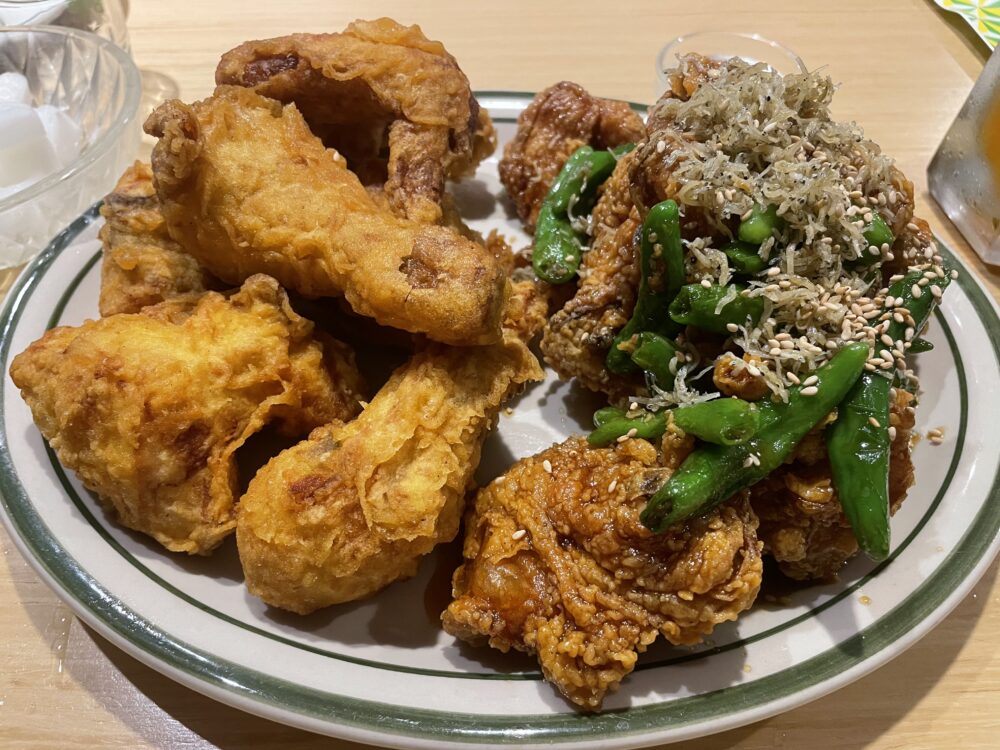
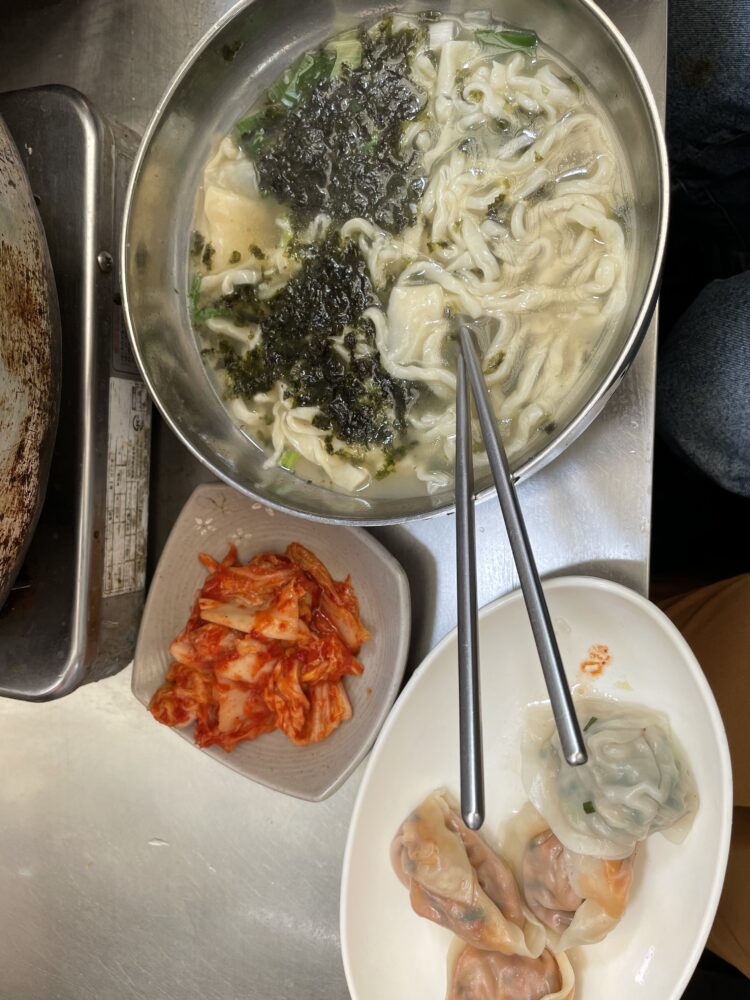
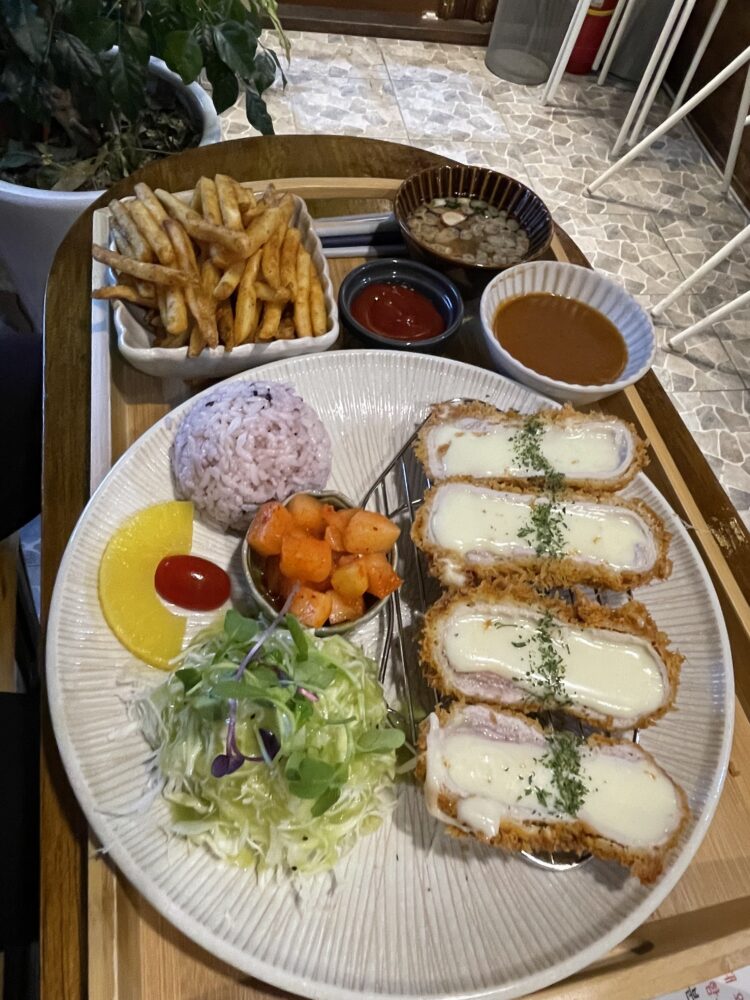
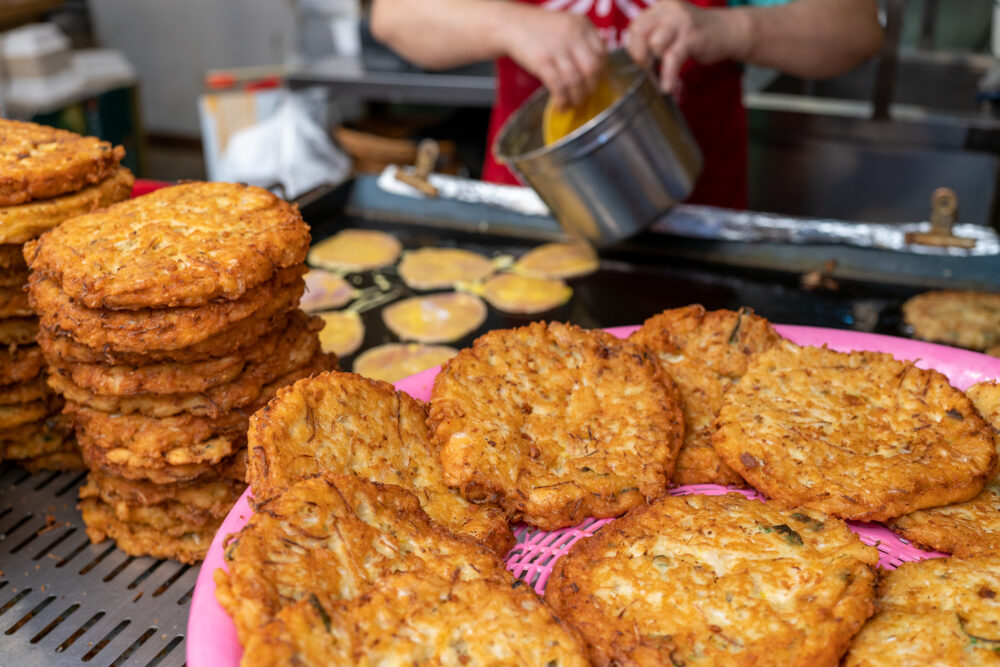
Skip Tosokchon Samgyetang Chicken Soup. This place is touted as “the best soup in Korea” but honestly, we found it quite bland and not even close to our favorite meal in South Korea. It’s right in the heart of the tourist district, the line can be over an hour long, and it costs nearly $14 for a single soup. Maybe it’s because we ordered the soup to-go (because we weren’t about to wait in the lunch rush line) but we weren’t impressed. I get it’s an indigenous recipe with ginseng and jujube* but I would say not worth the wait.
Street food is actually very common in Korea. But it’s all mostly the same. Tteokbokki rice cakes, steeped fish cakes, meat sticks, walnut puffs, and egg/cheese bread. It’s also not that cheap. I found that most items were at least $1 per piece.
Budget for 10 days in South Korea
Here’s exactly how much we spent in South Korea for two travelers over the course of 10 days.
Daily Accommodation Cost: $26
Daily Food Cost: $37
Total Spent on Transport: $150 + $55 Airport taxi
Amount Spent on activities in South Korea: $11
Total Spent in South Korea: $899.08
Total Spent Per Person Per Day in South Korea: $44.95
Considering we try to stick to a budget of $50 per day for the two of us ($25 pp per day) this is an expensive country for us. We found it difficult to save money when the bulk of our expenses was on food that we wanted to try. Korean food culture is very unique and we didn’t want to miss out on that experience. But unlike Japan where you can just share one single dish to save money–Korean cuisine is typically charged per person with a min of two people eating the same dish. This meant we had to eat out for every meal to try it all and spend way more than we wanted to.
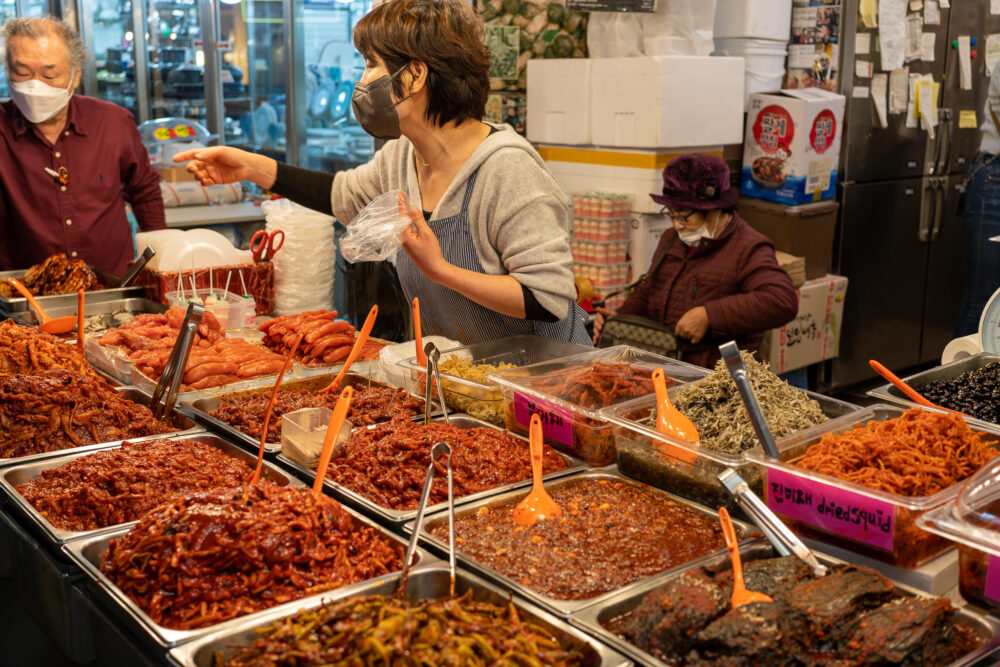
How to Save Money in South Korea
We visited South Korea and Japan back to back. While some things in Japan were definitely more expensive (transportation, mostly) I found South Korea, surprisingly, to be equally if not more expensive day-to-day as Japan. Here are a few ways to make South Korea a little more affordable.
1. Participate in a work exchange.
This is super popular in South Korea and usually consists of spending 1-4 hours per day helping at your hostel in exchange for free accommodation. You can ask around upon arrival if any hostels are looking for volunteers.
2. Street food or 7/11.
This is the cheapest way to eat in the country. Hot food in Asian 7/11’s is actually quite good. And super affordable. I recommend the bao buns, hot ramen, and all the grape-flavored gummy snacks.
3. Try lunchtime at fancier restaurants.
This can be a great way to try smaller dishes or specials at lower prices than the set dinner menus.
4. Go out in groups.
Certain meals should be eaten in groups. Korean BBQ for one. This is one of the meals most restaurants won’t even serve to a single traveler. Although some places charge per person, it’s often a little cheaper to dine with more people and share.
I really enjoyed my time in Korea. I felt like the 10 days we spent in the country was the perfect amount of time to get to know the culture on a really basic level and enjoy the best attractions, food, and destinations. South Korea is going to unseat any of my favorite countries to visit any time soon, but those who really love efficient and clean cities might feel differently.
Save This Post For Later!
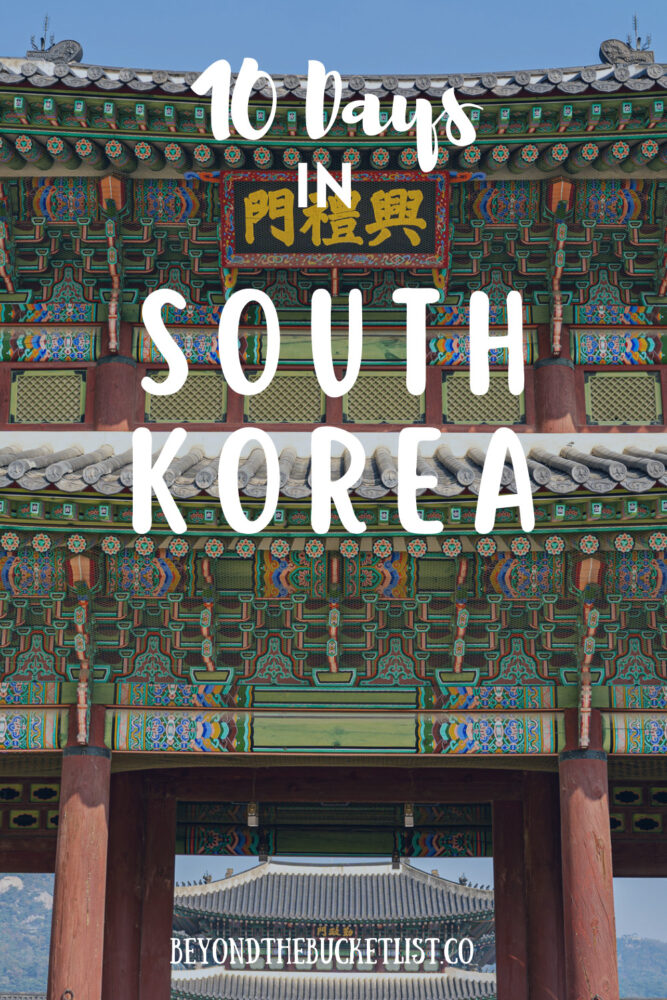



No Comments